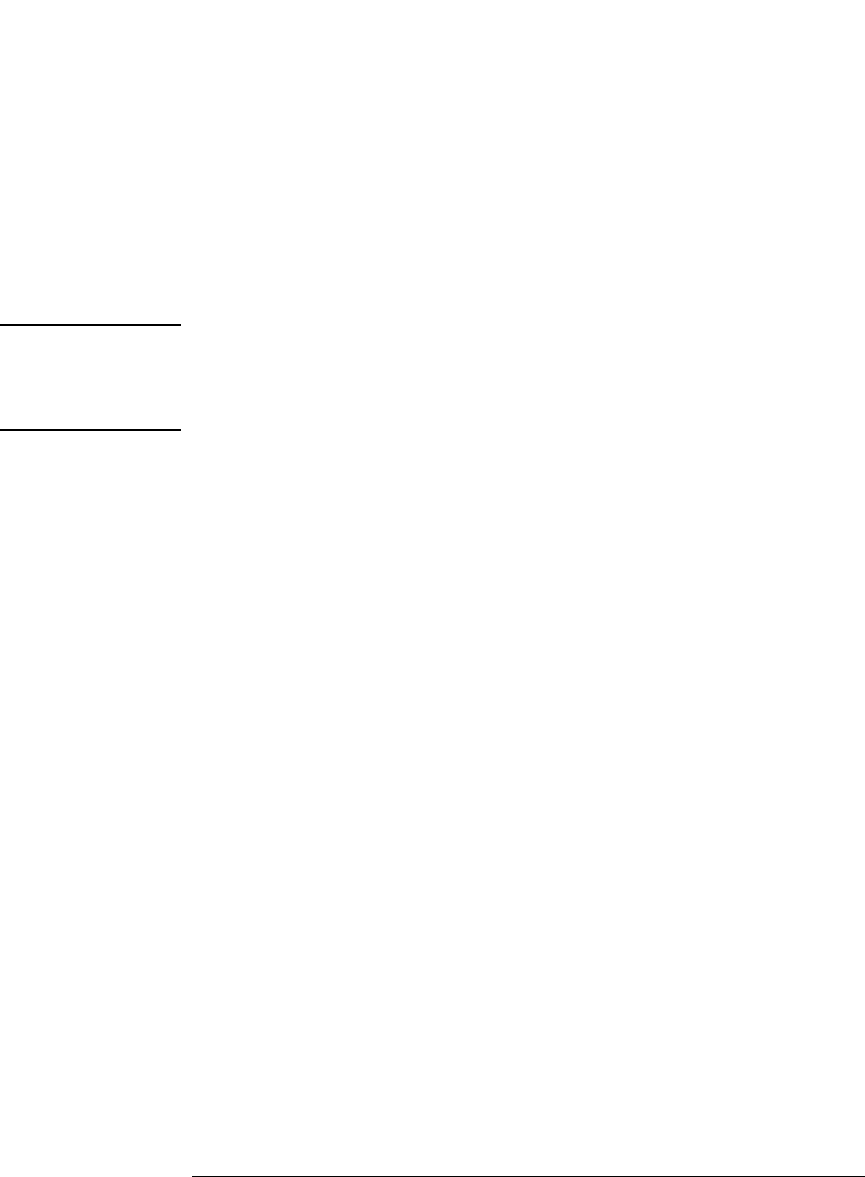User's Manual
Table Of Contents
- Agilent Technologies 16750A/B Logic Analyzer
- Agilent Technologies 16750A/B Logic Analyzer
- Contents
- Getting Started
- Step 1. Connect the logic analyzer to the device under test
- Step 2. Choose the sampling mode
- Step 3. Format labels for the probed signals
- Step 4. Define the trigger condition
- Step 5. Run the measurement
- Step 6. Display the captured data
- For More Information...
- Example: Timing measurement on counter board
- Example: State measurement on counter board
- Task Guide
- Probing the Device Under Test
- Choosing the Sampling Mode
- To select transitional timing or store qualified
- Formatting Labels for Logic Analyzer Probes
- Setting Up Triggers and Running Measurements
- Displaying Captured Data
- Using Symbols
- Printing/Exporting Captured Data
- Cross-Triggering
- Solving Logic Analysis Problems
- Saving and Loading Logic Analyzer Configurations
- Reference
- The Sampling Tab
- The Format Tab
- Importing Netlist and ASCII Files
- The Trigger Tab
- The Symbols Tab
- Error Messages
- Must assign Pod 1 on the master card to specify actions for flags
- Branch expression is too complex
- Cannot specify range on label with clock bits that span pod pairs
- Counter value checked as an event, but no increment action specified
- Goto action specifies an undefined level
- Maximum of 32 Channels Per Label
- Hardware Initialization Failed
- Must assign another pod pair to specify actions for flags
- No more Edge/Glitch resources available for this pod pair
- No more Pattern resources available for this pod pair
- No Trigger action found in the trace specification
- Slow or Missing Clock
- Timer value checked as an event, but no start action specified
- Trigger function initialization failure
- Trigger inhibited during timing prestore
- Trigger Specification is too complex
- Waiting for Trigger
- Analyzer armed from another module contains no "Arm in from IMB" event
- Specifications and Characteristics
- Concepts
- Understanding Logic Analyzer Triggering
- Understanding State Mode Sampling Positions
- Getting Started
- Glossary
- Index

69
Chapter 2: Task Guide
Setting Up Triggers and Running Measurements
• Insert and break down trigger functions from the loaded library just like
normal trigger functions.
• Copy trigger function libraries to other logic analysis systems and load
them into other logic analyzers that have trigger function library capability.
• Edit the trigger function library, adding or deleting functions, or delete the
library.
NOTE: If a trigger sequence or configuration file uses a trigger function library that
has been deleted, or a trigger function that has been deleted from a library,
the logic analyzer replaces the missing function with the default trigger
function.
To load/unload trigger function libraries
1. In the Trigger tab's Trigger Functions subtab, select the Trigger function
libraries button.
2. Select the library from the list.
Only libraries created in the same sampling mode are available.
3. Select the Load (or Unload) button.
All of the library's trigger functions are added to (or removed from) the list
of trigger functions.
To copy trigger function libraries between systems
1. Connect your logic analysis system to the network. (see the Agilent
Technologies 16700A/B-Series Logic Analysis System help volume)
2. Using a computer on your network, copy the appropriate files from the /
logic/trigger_functions/ directory to a central location, or
directly to other logic analyzers on the network.
See Also “To break down a trigger function” on page 67
“Saving/Recalling Trigger Setups” on page 85










